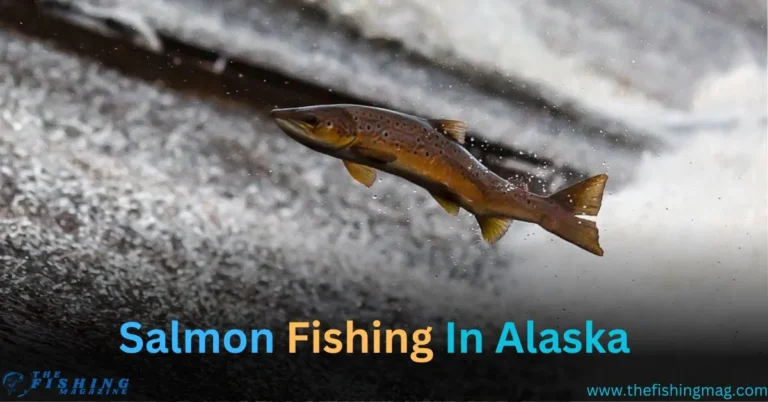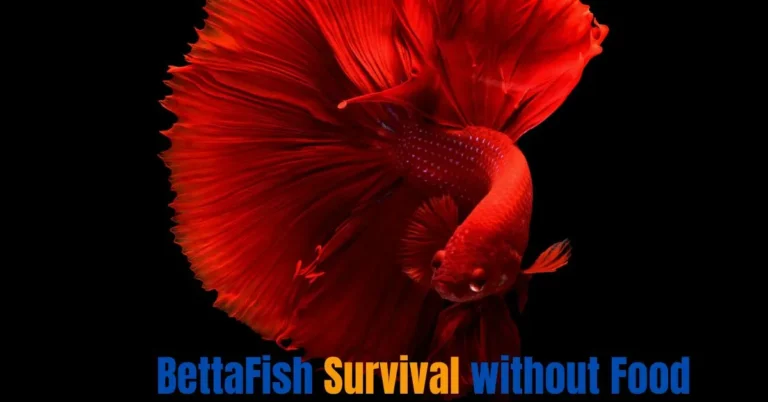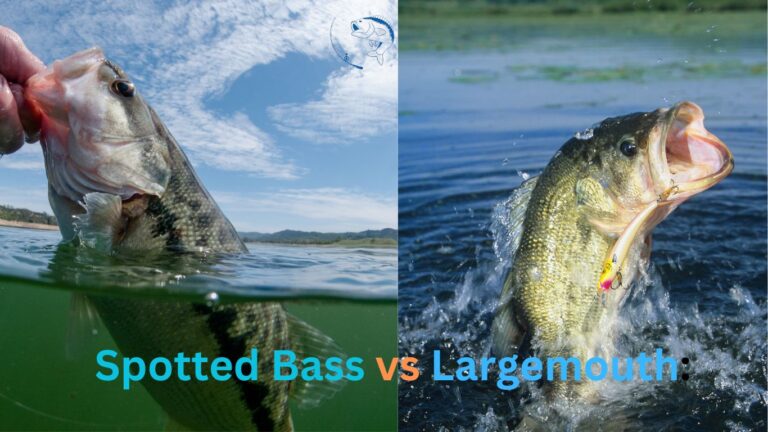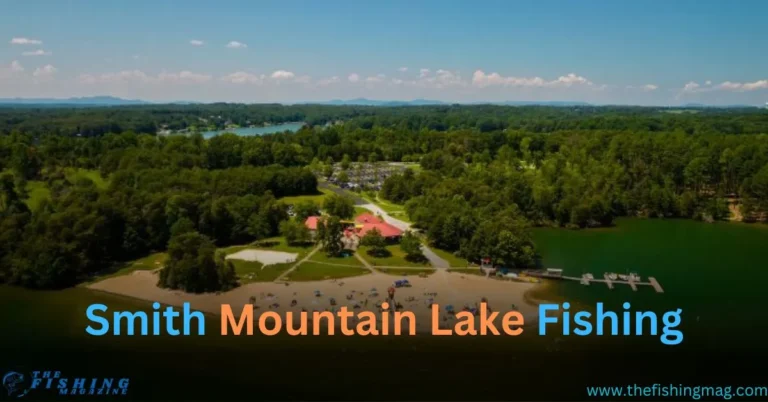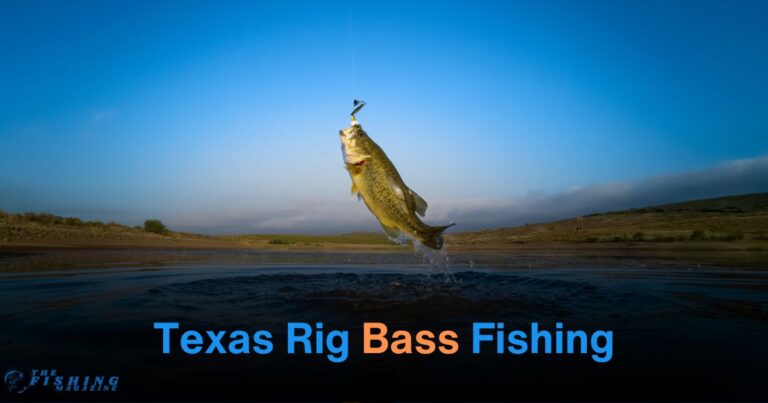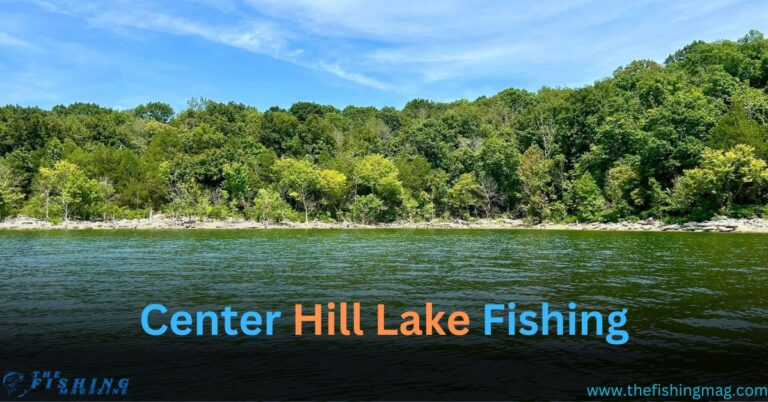Nestled in the heart of Indiana, Webster Lake fishing is a hidden gem enthusiasts. With its rich biodiversity, serene surroundings, and year-round fishing opportunities, it’s no wonder that Webster Lake has become a popular destination for both locals and visitors alike.
Whether you’re a seasoned angler or someone looking to cast your line for the first time, Webster Lake offers an experience that’s both challenging and rewarding.
In this comprehensive guide, we’ll delve into everything you need to know about fishing at Webster Lake. From the variety of fish species you can catch to the best fishing spots and techniques, this post will equip you with all the knowledge you need for a successful and enjoyable fishing trip. So, grab your gear, and let’s explore the angler’s paradise that is Webster Lake.
Why Webster Lake is a Top Fishing Destination
A Diverse Fishery
Webster Lake is renowned for its diverse fish population. The lake is home to a wide range of species, including muskie, largemouth bass, bluegill, crappie, and yellow perch. This diversity not only provides a thrilling experience for anglers but also ensures that there’s something for everyone, regardless of skill level.
Scenic Beauty and Tranquility
Beyond its rich fishery, Webster Lake is a place of stunning natural beauty. Surrounded by lush greenery and peaceful waters, the lake offers a tranquil escape from the hustle and bustle of everyday life. Whether you’re fishing from a boat or the shore, you’ll be treated to breathtaking views and a serene environment that enhances the overall fishing experience.
Year-Round Fishing Opportunities
Webster Lake’s fish population is active throughout the year, making it a prime location for fishing in any season. Whether you’re ice fishing in the winter or casting your line in the warmth of summer, Webster Lake provides year-round opportunities for anglers to catch a variety of species.
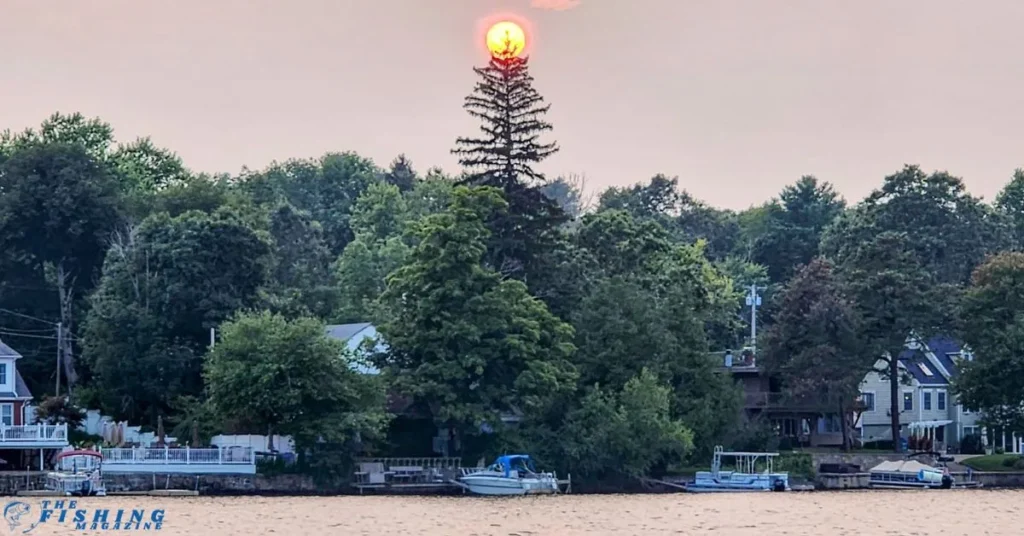
Species of Fish in Webster Lake
Muskie (Muskellunge)
Muskie is the crown jewel of Webster Lake, attracting anglers from far and wide. Known for their size and ferocity, muskies are often referred to as the “fish of 10,000 casts” due to their elusive nature. Catching one is a true badge of honor for any angler.
Tips for Catching Muskie
- Best Time: Late spring through early fall, particularly during the early morning or late evening.
- Bait: Large spinners, crankbaits, and live bait like suckers.
- Location: Target weed edges, drop-offs, and areas near submerged structures.
Largemouth Bass
Largemouth bass are another prized catch at Webster Lake. These fish are known for their aggressive strikes and provide a thrilling challenge for anglers.
Tips for Catching Largemouth Bass
- Best Time: Late spring to early summer, especially during the morning and evening.
- Bait: Topwater lures, soft plastics, and crankbaits.
- Location: Focus on areas with plenty of vegetation, lily pads, and submerged structures.
Bluegill
Bluegill are abundant in Webster Lake and are a great target for both novice and experienced anglers. These fish are easy to catch and provide a fun experience, especially for kids and families.
Tips for Catching Bluegill
- Best Time: Late spring through early fall.
- Bait: Small jigs, worms, or crickets.
- Location: Look for bluegill in shallow waters near docks, weed beds, and other structures.
Crappie
Crappie are a favorite among anglers at Webster Lake, especially during the spring when they move into shallower waters to spawn. These fish are known for their tasty fillets and can be caught in large numbers.
Tips for Catching Crappie
- Best Time: Spring and fall, particularly during spawning season.
- Bait: Use small jigs, minnows, or soft plastics.
- Location: Target brush piles, fallen trees, and areas with submerged vegetation.

Yellow Perch
Yellow perch are another popular species at Webster Lake, known for their delicious taste and schooling behavior. These fish are often caught in large numbers, making them a rewarding target.
Tips for Catching Yellow Perch
- Best Time: Fall and winter are prime times for catching yellow perch.
- Bait: Small jigs, minnows, and worms.
- Location: Focus on deeper waters, particularly near drop-offs and submerged structures.
Northern Pike
Northern pike are another exciting catch at Webster Lake, known for their sharp teeth and aggressive behavior. These fish can grow to impressive sizes and provide a thrilling challenge for anglers.
Tips for Catching Northern Pike
- Best Time: Late spring through early summer.
- Bait: Use large spoons, spinners, and live bait like shiners.
- Location: Target weedy areas, shallow bays, and near submerged structures.

Best Times to Fish at Webster Lake
Spring Fishing
Spring is an excellent time to fish at Webster Lake, as many species move into shallower waters to spawn. This season offers some of the best opportunities to catch largemouth bass, crappie, and bluegill.
- Muskie: Late spring is ideal for targeting muskie as they become more active with the warming water.
- Largemouth Bass: Target shallow areas with plenty of vegetation.
- Crappie: Spring spawning season makes crappie more accessible in shallower waters.
Summer Fishing
Summer fishing at Webster Lake can be highly rewarding, especially during the early morning and late evening when fish are most active. During the hotter part of the day, fish often move to deeper, cooler waters.
- Largemouth Bass: Focus on shaded areas, weed beds, and deeper waters during midday.
- Bluegill: Look for schools near docks and shallow weed beds.
- Yellow Perch: Target deeper waters where schools of perch are likely to be found.
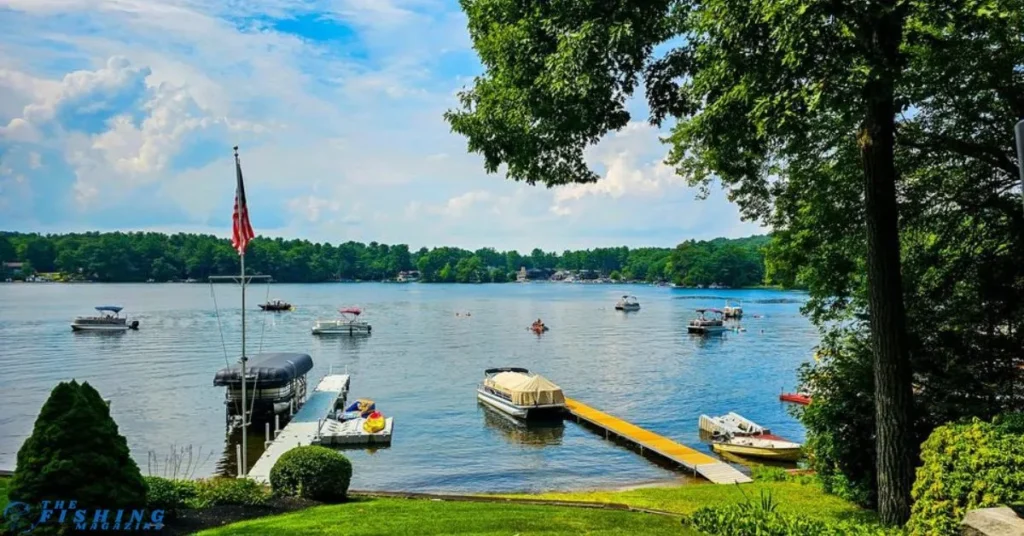
Fall Fishing
Fall is a great season for fishing at Webster Lake, as fish prepare for the colder months by feeding aggressively. This is an ideal time to target species like muskie, crappie, and yellow perch.
- Muskie: Fall is considered one of the best times to catch trophy muskie.
- Crappie: Cooler temperatures bring crappie back into shallower waters.
- Yellow Perch: Fall is prime time for catching large schools of yellow perch.
Winter Fishing
Winter brings ice fishing opportunities to Webster Lake, particularly for species like bluegill, yellow perch, and northern pike. Ice fishing can be an exciting and rewarding experience, but it requires proper preparation and safety measures.
- Bluegill: Look for bluegill near shallow structures under the ice.
- Yellow Perch: Focus on deeper waters where schools of perch are likely to be found.
- Northern Pike: Target weedy areas and drop-offs for a chance to catch a big pike through the ice.
Fishing Techniques and Tips for Webster Lake
Shore Fishing
Shore fishing at Webster Lake is a popular and accessible option for anglers. The lake’s extensive shoreline offers plenty of opportunities to find a good spot.
Tips for Shore Fishing
- Choose the Right Spot: Look for areas with natural cover, such as rocks, docks, or overhanging vegetation.
- Pack Light: Bring only the essentials, including a rod, tackle, bait, and a comfortable chair.
- Use Live Bait: Live bait like worms, minnows, or crickets can be particularly effective.
Boat Fishing
Boat fishing allows you to explore the deeper waters and less accessible areas of Webster Lake. Whether you’re trolling for muskie or casting for bass, a boat gives you the flexibility to reach prime fishing spots.
Tips for Boat Fishing
- Use Electronics: A fish finder can help you locate schools of fish and underwater structures.
- Trolling: Trolling with lures or live bait is an effective way to cover water and target species like muskie and northern pike.
- Safety First: Always wear a life jacket and be aware of changing weather conditions.
Kayak Fishing
Kayak fishing is a growing trend at Webster Lake, offering a unique and intimate way to fish. Kayaks are particularly useful for accessing shallow areas and getting close to the shoreline where fish often hide.
Tips for Kayak Fishing
- Stay Balanced: Keep your gear organized and your movements steady to avoid tipping.
- Pack Light: Space is limited, so bring only the essentials.
- Fish the Shoreline: Kayaks are perfect for getting close to the shoreline where fish often hide.
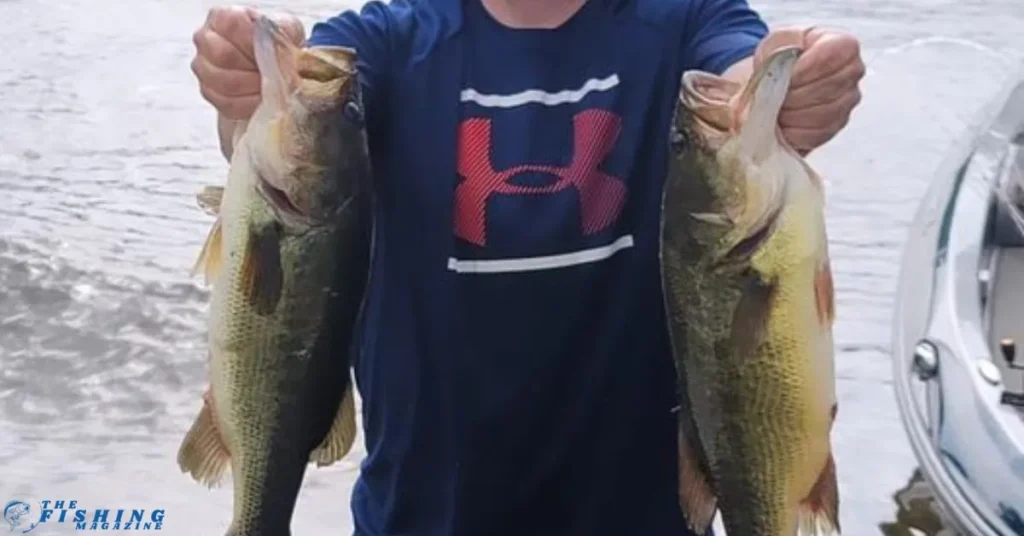
Essential Gear and Equipment for Webster Lake Fishing
Rods and Reels
The type of rod and reel you need depends on the species you’re targeting. A medium-light spinning rod is versatile enough for most species at Webster Lake, but if you’re targeting larger fish like muskie or northern pike, consider a medium-heavy setup.
Tackle and Lures
- Jigs: Effective for bluegill, crappie, and perch, especially when fished near the bottom.
- Crankbaits: Great for covering water and targeting bass and pike.
- Spinners and Spoons: Ideal for muskie and pike, especially in deeper waters.
Bait
- Live Bait: Minnows, worms, and crickets are effective for most species.
- Artificial Bait: Soft plastics, crankbaits, and topwater lures can be highly effective depending on the species and conditions.
Other Essentials
- Fishing License: A valid Indiana fishing license is required for all anglers over the age of 16.
- Polarized Sunglasses: Helps reduce glare and see beneath the water’s surface.
- Sun Protection: Bring sunscreen, a hat, and protective clothing to shield yourself from the sun.
- Cooler: If you plan on keeping your catch, a cooler with ice is essential to keep your fish fresh.

Webster Lake Fishing Charters
Experience the Best Fishing Charters on Webster Lake
Webster Lake, officially known as Lake Chargoggagoggmanchauggagoggchaubunagungamaugg, is a fishing paradise located in Webster, Massachusetts. This scenic lake spans over 1,400 acres, making it an excellent spot for anglers looking to reel in largemouth bass, smallmouth bass, northern pike, perch, crappie, and chain pickerel. Whether you’re a beginner or an experienced angler, booking a Webster Lake fishing charter is the best way to enhance your fishing adventure.
Why Choose a Fishing Charter on Webster Lake?
Fishing charters provide expert guidance, access to the best fishing spots, and all the necessary gear to maximize your catch. Some key benefits include:
Local Expertise: Captains know the lake’s best fishing hotspots and seasonal fish movements.
Top-Quality Gear: No need to bring your own equipment charters provide rods, reels, and bait.
Stress-Free Experience: Focus on fishing while your guide takes care of navigation and techniques.
Customized Trips: Options for half-day, full-day, and family-friendly fishing experiences.
Regulations and Licensing
Fishing at Webster Lake is regulated by Indiana state laws, and it’s essential to be aware of the rules to ensure a legal and enjoyable experience.
Licensing Requirements
All anglers over the age of 16 must have a valid Indiana fishing license. Licenses can be purchased online, at local shops, or through authorized vendors. The type of license you need depends on the duration and nature of your fishing trip, with options available for daily, weekly, or annual licenses.
Bag and Size Limits
Indiana sets specific bag and size limits for different species to help preserve fish populations. Be sure to check the latest regulations before your trip to avoid any fines or penalties.
Seasonal Restrictions
Some species at Webster Lake have seasonal restrictions, particularly during spawning periods. It’s important to be aware of these restrictions and plan your fishing trip accordingly.
FAQs About Fishing at Webster Lake
What is the Best Time of Year to Fish at Webster Lake?
The best time of year depends on the species you’re targeting. Spring and fall are ideal for bass and crappie, while summer offers great opportunities for perch and bluegill. Winter is also a good time for ice fishing, particularly for northern pike and perch.
Do I Need a Boat to Fish at Webster Lake?
While having a boat can enhance your fishing experience, it’s not necessary. Shore fishing and kayak fishing are both popular and effective ways to fish at Webster Lake.
Can I Fish at Webster Lake Year-Round?
Yes, Webster Lake offers year-round fishing opportunities. Each season offers something different, from spring bass and crappie runs to winter ice fishing.
Are There Fishing Guides Available?
Yes, several local guides and charters operate on Webster Lake. These services can provide valuable knowledge, equipment, and assistance, making them a great option for both beginners and experienced anglers.
What Should I Bring for a Day of Fishing at Webster Lake?
In addition to your fishing gear, be sure to bring a valid fishing license, sunscreen, polarized sunglasses, water, snacks, and appropriate clothing for the weather. If you’re fishing from a boat or kayak, a cooler for your catch is also recommended.
What Kind of Fish Can I Catch at Webster Lake?
Webster Lake is home to a variety of fish species, including muskie, largemouth bass, northern pike, yellow perch, crappie, and bluegill. The species you’ll catch depends on the time of year and your fishing location.
Conclusion
Webster Lake is a premier fishing destination that offers something for every angler. With its diverse fish species, scenic surroundings, and year-round opportunities, it’s a place where you can enjoy a peaceful day on the water or an exciting fishing adventure.
Whether you’re a seasoned angler or a beginner, Webster Lake provides a unique and rewarding fishing experience. So pack your gear, secure your fishing license, and get ready to explore the rich waters of Webster Lake. Tight lines and happy fishing.

